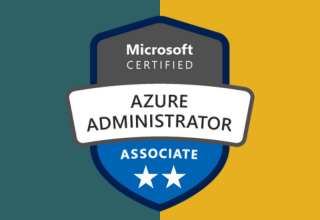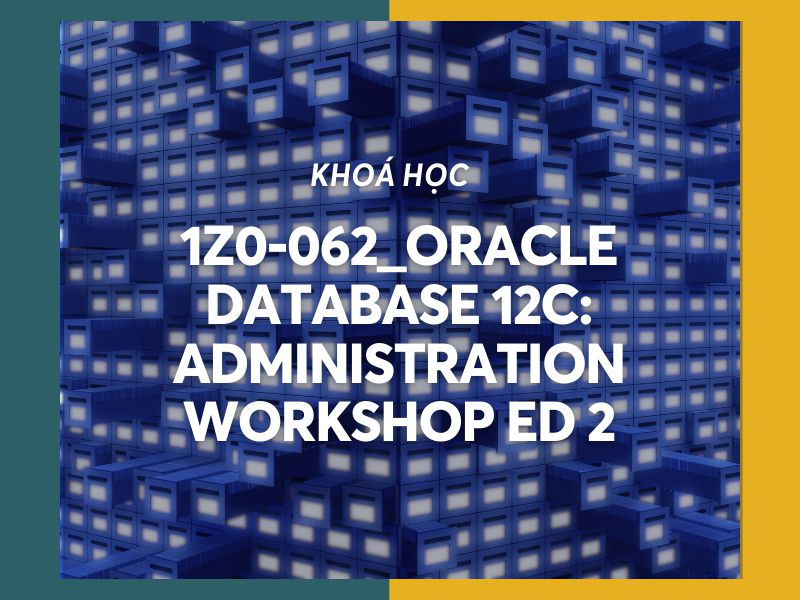The Oracle Database 12c: Administration Workshop will teach you about the Oracle Database architecture. You will discover how to effectively manage an Oracle Database instance, configure the Oracle Network Environment and perform database maintenance.
After completing this course, students will be able to:
- Create and manage an Oracle Database Instance.
- Create and manage Storage Structures.
- Configure the Oracle Network Environment.
- Create and manage users.
- Monitor the database and manage performance.
- Learn basic information on backup and recovery techniques.
- Use the Oracle Support Workbench and My Oracle Support to update your Oracle Database software.
- Ensure fast, reliable, secure and easy to manage performance. Optimize database workloads, lower IT costs and deliver a higher quality of service by enabling consolidation onto database clouds.
- Expert instruction and hands-on demonstrations will provide you with real world experience. By engaging in hands-on exercises to reinforce your learning, you’ll develop in demand skills to effectively manage an Oracle Database.
OCA
Before attending this course, students must have:
- Data processing
- Familiarity with data processing concepts and techniques
Introduction
- Course Objectives o Course Schedule
- Overview of Oracle Database 12c o Overview of Oracle Cloud
- Overview of the HR Schema
Exploring the Oracle Database Architecture o Oracle Database Architecture: Overview o Oracle Database Instance Configurations
- Connecting to the Oracle Database Instance o Oracle Database Memory Structures
- Process Architecture o Process Structures
- Process Startup Sequence
- Database Storage Architecture
Managing the Database Instance
- Introducing Oracle Database Management Tools
- Understanding the Enterprise Manager Management Framework
- Logging in to Oracle Enterprise Manager Database Express
- Using the Enterprise Manager Database Express Home Page
- Using Enterprise Manager Cloud Control
- Using SQL*Plus
- Using SQL Developer
- Initialization Parameter Files
Configuring the Oracle Network Environment
- Oracle Net Services Overview
- Oracle Net Listener Overview
- Establishing Oracle Network Connections
- Tools for Configuring and Managing the Oracle Network
- Using the Listener Control Utility
- Using Oracle Net Configuration Assistant
- Using Oracle Net Manager
- Using Enterprise Manager Cloud Control
Managing Database Storage Structures
- Understanding Storage of Data
- Database Block Contents
- Exploring the Storage Structure
- Creating a New Tablespace
- Overview of Tablespaces Created by Default
- Managing Tablespaces
- Viewing Tablespace Information
- Using Oracle Managed Files
Administering User Security
- Database User Accounts
- Predefined Administrative Accounts o Creating a User
- Authentication
- Unlocking a User Account and Resetting the Password o Privileges
- Roles
- Profiles
Managing Data Concurrency
- Overview of Locks
- Locking Mechanism
- Data Concurrency
- DML Locks
- Enqueue Mechanism
- Lock Conflicts
Managing Undo Data
- Undo Data Overview
- Transactions and Undo Data
- Storing Undo Information
- Comparing Undo Data and Redo Data
- Managing Undo
- Configuring Undo Retention
- Guaranteeing Undo Retention
- Changing an Undo Tablespace to a Fixed Size
Implementing Oracle Database Auditing
- Separation of Responsibilities
- Database Security
- Monitoring for Compliance
- Standard Database Auditing
- Unified Audit Data Trail
- Separation for Duties for Audit Administration (AUDIT_ADMIN and AUDIT_VIEWER roles)
- Configuring the Audit trail
- Specifying Audit Options
Performing Database Maintenance
- Database Maintenance
- Viewing the Alert History
- Terminology
- Automatic Workload Repository (AWR)
- Statistic Levels
- Automatic Database Diagnostic Monitor (ADDM)
- Advisory Framework
- Enterprise Manager and Advisors
Managing Performance
- Performance Monitoring
- Tuning Activities
- Performance Planning o Instance Tuning
- Performance Tuning Methodology o Performance Tuning Data
- Monitoring Performance
- Managing Memory
Managing Performance: SQL Tuning
- SQL Tuning
- Oracle Optimizer
- SQL Plan Directives
- Adaptive Execution Plans
- SQL Advisors
- Automatic SQL Tuning Results
- Implement Automatic Tuning Recommendations
- SQL Tuning Advisor
Managing Resources by Using Database Resource Manager
- Database Resource Manager Overview
- Database Resource Manager Concepts
- Using the Resource Manager
- Default Maintenance Resource Manager Plan
- Default Plan Example
- Resource Manager Workflow
- Specifying Resource Plan Directives
- Resource Allocation Methods for Resource Plans
Automating Tasks by Using Oracle Scheduler
- Simplifying Management Tasks
- Understanding a Simple Job
- Core Components
- Basic Work Flow
- Persistent Lightweight Jobs
- Using a Time-Based or Event-Based Schedule
- Creating a Time-Based Job
- Creating an Event-Based Schedule
Managing Space
- Space Management Overview
- Block Space Management
- Row Chaining and Migration
- Free Space Management Within Segments
- Types of Segments
- Allocating Extents
- Allocating Space
- Creating Tables Without Segments
Backup and Recovery Concepts
- Categories of Failures
- Flashback Technology
- Understanding Instance Recovery o Phases of Instance Recovery
- Tuning Instance Recovery
- Using the MTTR Advisor
- Media Failure
- Configuring for Recoverability
Moving Data
- Moving Data: General Architecture
- Oracle Data Pump
- SQL*Loader
- External Tables
Working with Oracle Support
- Using the Support Workbench
- Using Enterprise Manager
- Working with Oracle Support o My Oracle Support Integration o Researching an Issue
- Logging Service Requests o Managing Patches
- Applying a Patch Release







